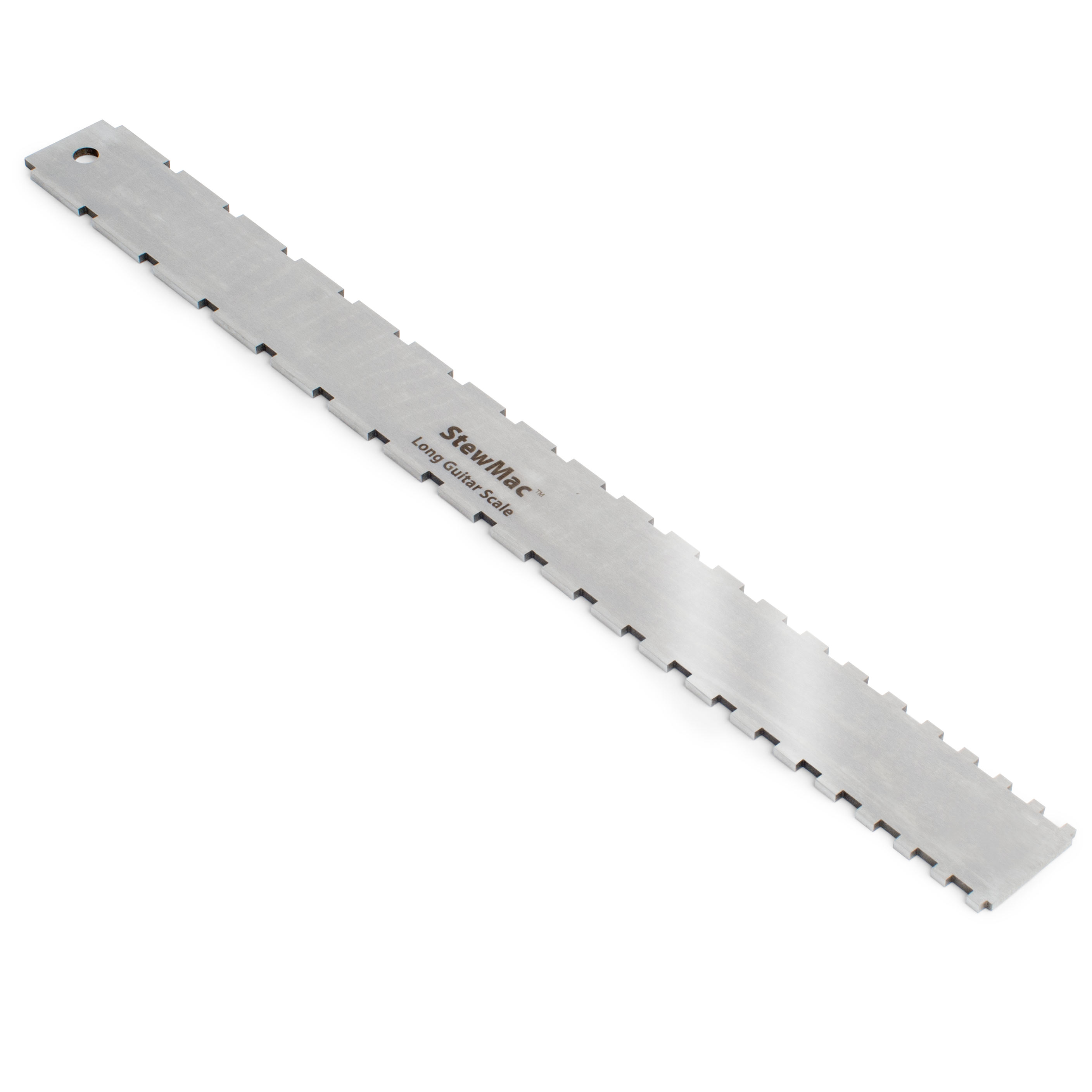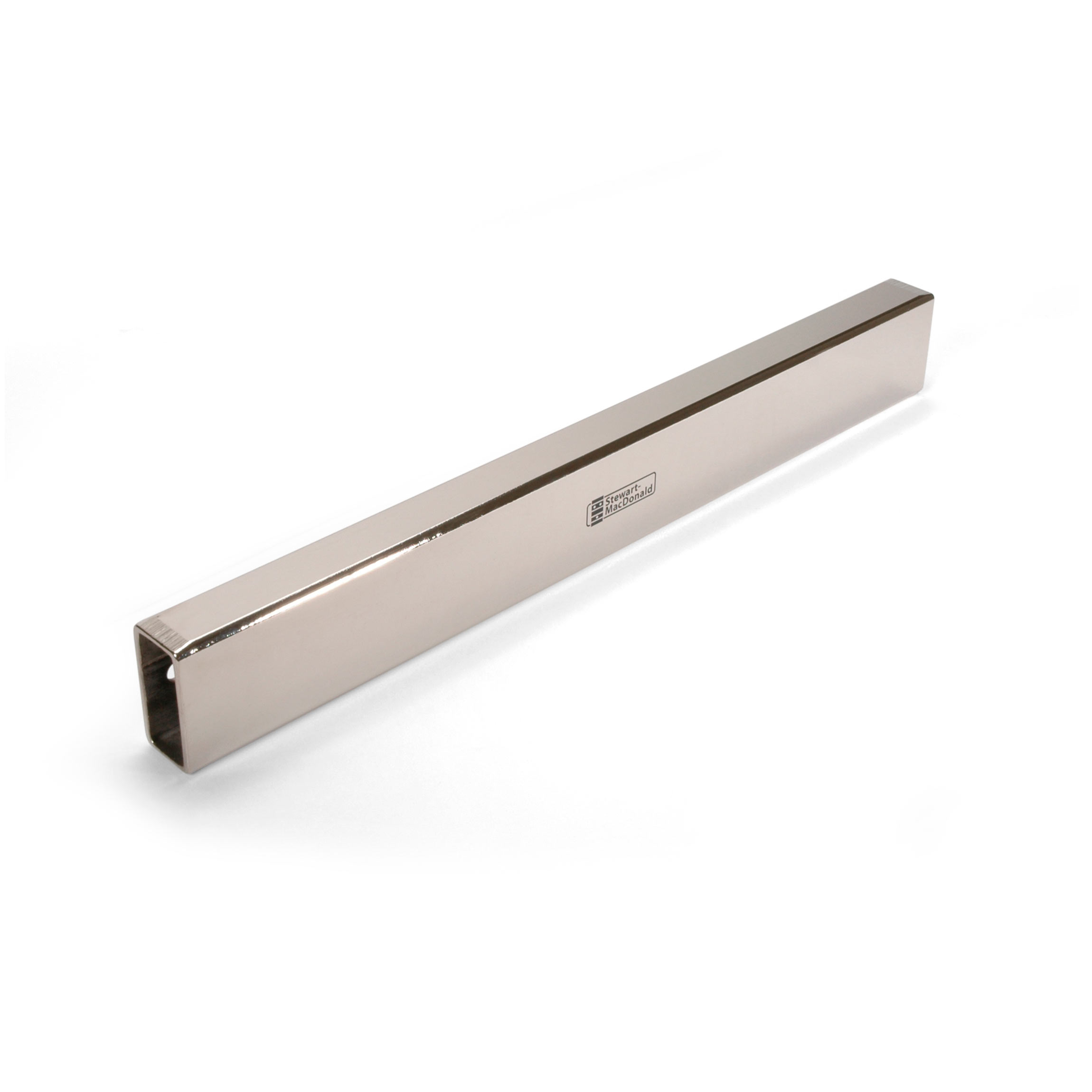Banjo setup tips
Issue 214 April 10, 2014
How do you set the tension on a banjo head? If you're more familiar with guitars than banjos, Dan Erlewine has a few quick tips for you.
- A neat little caul for holding a banjo in the playing position
- You might already own a notched straightedge for banjos!
- The old "quarter trick" for setting head tension
Video Transcription
[on-screen text reads: Trade Secrets! Guitar shop tech tips from stewmac.com]
[Dan is playing a banjo]
A custom caul for holding the banjo
Dan Erlewine: Look ma, no hands. What I did here for this banjo set up is take a 2 x 4 and cut some notches in it and cut it to an 11 inch radius. Actually, it would've been an 11 inch diameter, so a five and a half inch radius is a little holder, so I can hold it in the playing position.
You can't really clamp the brackets in the shell and you can't clamp the neck because there's strings on it. I want it in this position when I use my straight edges to adjust the neck.
What I like about having an instrument in the playing position, whether it's a banjo, or a guitar, bass, or a mandolin, is that's the true position of the neck and it's not going to fall backward or forward. Both hands are free to hold the straight edge carefully while I measure.
I'm looking for the gap between the bottom of the straight edge and the top of the frets. I also have a hand free to adjust the neck.
The gap here is probably five thousandths [on-screen text reads: .005" gap?] so I'll have to get a Feeler Gauge to figure that out.
Using a bass notched straightedge for measurement
Another measurement that I'm curious about that I can do with a guitar on a base is to use a Notched Straightedge. They sit over the frets and raise the board. Well, I haven't had one for banjo until about a month ago. I picked up my Bass Notched Straightedge and used the 35 inch scale side, and setting the fourth notch over the nut, I was able to read the fret board and that made me really happy because that's a measurement I really like to take.
I can't get the last few frets, but the main portion of the neck, I've got it covered here [on-screen text reads: no gaps]. That tells me this neck is dead flat. By knowing what the wood is and what the frets are, you can make a choice, whether you should level the frets. I think that's what this needs, a quick leveling. Then the frets will be on the same plane as the board. I can loosen the trust rod and give this banjo a little bit of relief and the player will be happy. A good amount of relief for an open back banjo is 15 to 20 thousandths at the ninth fret.
If you have the Bass Notched Straightedge in your shop, you also have a banjo notched straight edge, and you didn't even know it.
Old "quarter trick" for setting head tension
I'm tensioning the head a little bit here and banjo players that know what they're doing, will [Dan strums the banjo], you can hear it, they can feel that spring in the head. I was taught to do it with a very straight stick and you slide the stick right in front of the bridge, across the skin, and slide a quarter underneath it. If that goes, that's about the right amount of sag you want in the top and you have the right tension.
That's how I do it.





